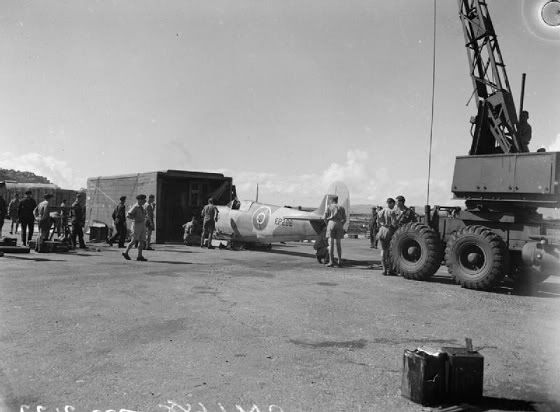Spitfires went through extensive rounds of camouflage paint, from dark and light brown, to a pale gray, to a baby blue. Perhaps their most unusual colour, though, was a light pink.
The pink, slightly too washed-out to be an actual baby pink, still seems bright enough to signal every enemy within five miles. This is certainly true when the Spitfires were seen from above. They stand out brightly against the ground. To make sure they were rarely seen from above, these planes were painted to fly just under cloud cover. Although the planes were ideally meant to fly at sunset and sunrise, when the clouds took on a pinkish hue and made the plane completely invisible against them, they were also useful during the day. Clouds are pinker than we give them credit for. We perceive them as white against the sky because the particles in the sky scatter blue light, sending some of it down towards us and letting us see the sky as blue. Clouds scatter every kind of light, and against the intense blue sky look whitish grey. But their coluor depends on what kind of light gets to them, and what they are floating next to.
Although we see the sky as a radiant blue, the particles are actually filtering out a lot of the blue light that gets down to the earth's surface. When the blue light is scattered, a good deal of it goes right back up into space, which is why the atmosphere of earth glows blue in some pictures. This filters out a good deal of the blue that gets to the clouds. The clouds scatter what they have, which is a spectrum of light with at least some of the blue filtered out, shifting the overall light ever so slightly towards red. Add to that the fact that the water droplets in clouds can diffract light at different angles, and the clouds are often rife with pastel shades of pink, orange, and green. They look white compared to a glowing blue sky, and a quick glance leaves people with the impression that they are white, but a long look should reveal this shifting, if minor, shades. A light pink plane is safer against them than anyone would expect.







